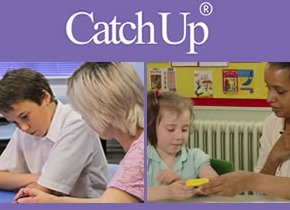
Request a full Catch Up® information brochure and details of our free information webinars
Find out more
Have you cottoned on to the importance of teacher feedback to improve learning? As John Hattie says: “When feedback is combined with effective instruction, it can be very powerful in enhancing learning.” (‘Visible Learning’ 2009)
However, some teachers may now be swamped with time-consuming methods to deliver that feedback and wondering desperately if all their efforts are worthwhile. The challenge with feedback is to get the balance right – enough to trigger pupil learning and engagement but delivered in a streamlined form that does not over-burden teachers (or pupils!).
Catch Up® has a pretty neat solution to providing effective feedback. The individual session sheet (which is used to structure each 15 minute Catch Up® session) has two small boxes at the bottom for comments and follow up. If used effectively, these boxes can enhance ‘learning through success’, which is key to the Catch Up® interventions.
Top Tips for streamlined feedback:
Catch Up® is the working name of The Caxton Trust, a not-for-profit charity registered in England and Wales (1072425) and Scotland (SC047557) as well as a company limited by guarantee (03476510). Catch Up is a registered trademark.
The Catch Up® Web site use "cookies" to help you personalise your online experience. A cookie is a text file that is placed on your hard disk by a Web page server. Cookies cannot be used to run programs or deliver viruses to your computer. Cookies are uniquely assigned to you, and can only be read by a web server in the domain that issued the cookie to you.
Click on the different category headings below to find out more. You can change your default settings very easily. To turn cookies on, click the button to the right. To turn cookies off, click the buttons to the left. Please read our cookie policy to find out more.
Performance monitoring cookies: Google Analytics cookies (_ga,_gid) - these can last up to 2 years.
Strictly necessary cookies used by the site content management system: PHPSESSID (used to record your logged in session) and allow_cookies (used to record that the user has consented to cookies) - these are either temporary (session) cookies or expire after no more than 30 minutes and are used to provide functionality as you navigate around the site and allow you to access secure areas.